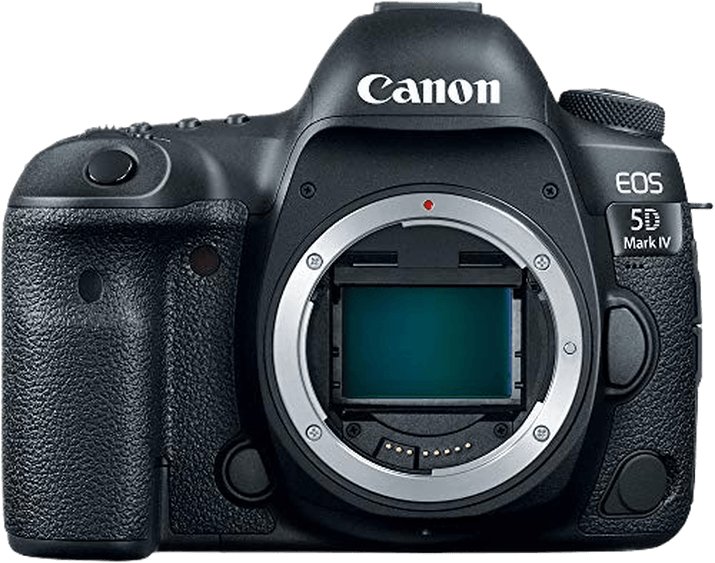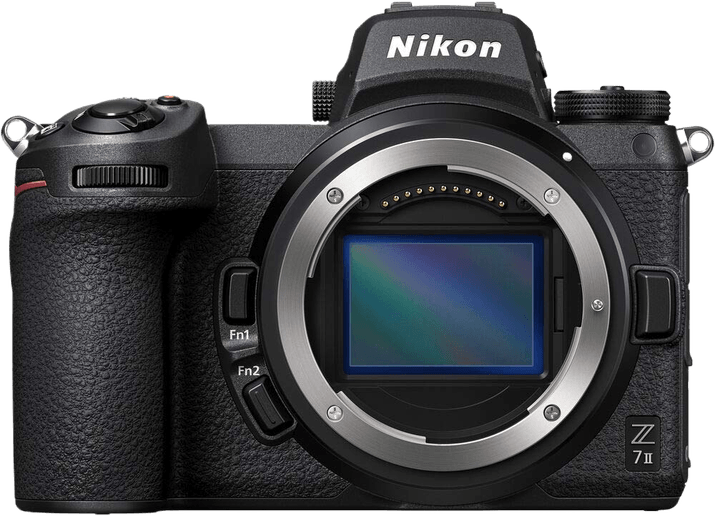Canon EOS 5D Mark IV vs Nikon Z7 II Comparison
Canon EOS 5D Mark IV

Nikon Z7 II

The Nikon Z7 II takes the lead with a score of 85/100, outperforming the Canon EOS 5D Mark IV, which scored 75/100. Both cameras share some common specifications, such as being released in the same price range (around $3400-$3500). However, there are significant differences that set them apart.
The Nikon Z7 II excels with its mirrorless design, making it lighter (705g) and more compact (134 x 101 x 70mm) than the Canon EOS 5D Mark IV, which is a DSLR and weighs 890g with dimensions of 151 x 116 x 76mm. This makes the Nikon Z7 II more portable and convenient for on-the-go photography.
On the other hand, the Canon EOS 5D Mark IV, being a DSLR, offers the advantage of an optical viewfinder, which some photographers prefer. Despite this advantage, the Nikon Z7 II’s higher score reflects its overall better performance and features as a mirrorless camera.
Considering the points mentioned, the Nikon Z7 II stands out as the superior choice due to its lightweight design and better performance, while the Canon EOS 5D Mark IV may still appeal to those who prefer using DSLRs with optical viewfinders.
Canon EOS 5D Mark IV vs Nikon Z7 II Overview and Optics
The Nikon Z7 II emerges as the winner in the optics comparison, scoring 86/100, while the Canon EOS 5D Mark IV scores 76/100. Both cameras share some common specifications, such as full-frame CMOS sensors and respective lens mounts, with the Canon using EF mount and Nikon using the Z mount.
The Nikon Z7 II excels with its higher megapixel count of 45.75, compared to the Canon’s 30.4. This results in better image resolution and detail. Additionally, the Nikon has a faster shooting speed of 10 frames per second, compared to the Canon’s 7, allowing for quicker image capture. The Z7 II also boasts a higher DXOMARK sensor score of 100, as opposed to the 5D Mark IV’s 91, indicating superior image quality. Furthermore, the Nikon Z7 II features image stabilization, which the Canon lacks, enhancing the ability to capture sharp images in various conditions.
On the other hand, the Canon EOS 5D Mark IV has the advantage of a well-established EF lens mount, providing users with a wide range of compatible lenses. The Nikon Z mount is relatively new and has fewer native lenses available, although this is expected to change with time.
In terms of optics, the Nikon Z7 II stands out as the better choice due to its higher resolution, faster shooting speed, better image quality, and built-in image stabilization. The Canon EOS 5D Mark IV’s main advantage lies in its extensive lens compatibility. However, the Nikon Z7 II’s superior optical performance makes it the more attractive option for photographers prioritizing image quality and performance.
Canon EOS 5D Mark IV vs Nikon Z7 II Video Performance
The Canon EOS 5D Mark IV and the Nikon Z7 II both have a video score of 91 out of 100, making them equally proficient in video capabilities. Both cameras offer 4K video resolution and have a maximum video frame rate of 120fps. Additionally, they both include built-in time-lapse functionality.
The Canon EOS 5D Mark IV has a slight advantage in terms of maximum video dimensions, offering 4096 x 2160 pixels compared to the Nikon Z7 II’s 3840 x 2160 pixels. This means the Canon 5D Mark IV produces slightly wider and more detailed videos, which may be preferable for filmmakers and videographers looking for the highest possible video quality.
On the other hand, the Nikon Z7 II does not have any significant advantages over the Canon EOS 5D Mark IV in terms of video capabilities. Both cameras share similar features, and their video scores reflect their comparable performance in this aspect.
In conclusion, the Canon EOS 5D Mark IV and Nikon Z7 II are evenly matched in terms of video capabilities, with the Canon 5D Mark IV having a minor edge in maximum video dimensions. Both cameras are suitable for videographers and filmmakers looking for high-quality video output, and the choice between the two may come down to personal preference or other factors such as brand loyalty or price.
Canon EOS 5D Mark IV vs Nikon Z7 II Features and Benefits
The Nikon Z7 II outperforms the Canon EOS 5D Mark IV with a feature score of 87/100 compared to Canon’s 74/100. Both cameras share some common specifications, such as a 3.2-inch screen size, touchscreen functionality, and WIFI connectivity.
The Nikon Z7 II surpasses the Canon EOS 5D Mark IV in several aspects. It has a higher screen resolution of 2,100,000 dots compared to Canon’s 1,620,000 dots, providing a sharper and clearer display. The Nikon Z7 II also features a flip screen, offering greater flexibility and ease when composing shots from various angles. Additionally, the Nikon Z7 II includes Bluetooth connectivity, enabling seamless sharing and remote control options.
On the other hand, the Canon EOS 5D Mark IV has one advantage over the Nikon Z7 II – GPS functionality. This feature allows photographers to geotag their images, which can be useful for travel and landscape photography.
Taking all the specifications into account, the Nikon Z7 II is the superior camera in terms of features, with its higher screen resolution, flip screen, and Bluetooth connectivity. These enhancements provide a more convenient and efficient shooting experience. However, for photographers who value geotagging capabilities, the Canon EOS 5D Mark IV remains a viable option. Ultimately, the choice between these two cameras depends on the individual preferences and priorities of the user.
Canon EOS 5D Mark IV vs Nikon Z7 II Storage and Battery
The Canon EOS 5D Mark IV and Nikon Z7 II both score 71/100 in storage and battery, making them equal in this category. They share common features such as having two memory card slots. The 5D Mark IV accepts SD/SDHC/SDXC (UHS-I compatible) and Compact Flash cards, while the Z7 II takes SD, CFexpress Type B/XQD (UHS-II compatible) cards.
The 5D Mark IV outperforms the Z7 II in battery life, providing 900 shots compared to the Z7 II’s 420 shots. This is due to the 5D Mark IV using the LP-E6N battery type. On the other hand, the Z7 II is superior in terms of convenience, as it offers USB charging with its EN-EL15c battery type. This feature is absent in the 5D Mark IV.
Both cameras have their strengths and weaknesses in storage and battery. The Canon EOS 5D Mark IV is better for extended shooting sessions with its longer battery life, while the Nikon Z7 II provides more convenience through USB charging. The choice ultimately depends on the user’s preferences and needs.
Canon EOS 5D Mark IV vs Nikon Z7 II – Our Verdict
Are you still undecided about which camera is right for you? Have a look at these popular comparisons that feature the Canon EOS 5D Mark IV or the Nikon Z7 II:

